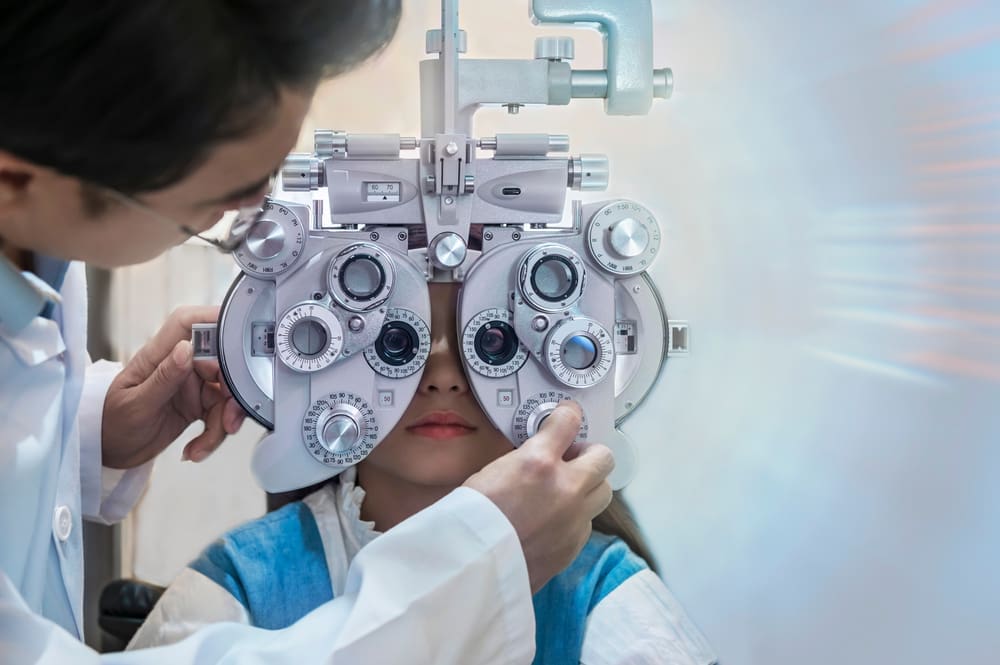Seeing Clearly: Nearsighted vs. Farsighted—What’s Your Blur Story?
Hey there, fellow vision enthusiasts! Let’s talk about something we’ve all grumbled about at least once: squinting at a restaurant menu like it’s written in hieroglyphics or holding our phone just so to read a text. Whether you’re team “I can’t see the whiteboard” or “my arms aren’t long enough anymore,” Nearsightedness and Farsightedness are the ultimate party crashers in our lives. But don’t worry—we’re here to decode these eye quirks, crack a few jokes, and maybe even convince you that crisp, clear vision isn’t just a pipe dream.
Here at Liberty Laser Eye Center in Vienna, Virginia, we’ve spent years turning “blurry” into “brilliant” for folks across Washington DC. From Lasik eye surgery to Dry Eye Treatment, we’ve seen it all (pun intended). So grab your favorite beverage, and let’s dive into the wild world of eyeballs.
What’s the Deal with Nearsightedness and Farsightedness?
Imagine your eye is a camera. If the lens isn’t focusing light properly on the retina, you get a blurry snapshot of life. That’s basically what’s happening with Nearsightedness (myopia) and Farsightedness (hyperopia). But how do they actually differ? Let’s break it down.
Nearsightedness: When “Near” is Your Comfort Zone
If you’re nearsighted, your eyeball is either too long or your cornea is too curved. This means light focuses in front of your retina instead of on it. Translation: road signs look like modern art, but your phone screen? Crystal clear. Classic symptoms include:
- Squinting like a detective in a noir film.
- Sitting front-row at movies (or migraines from trying to sit farther back).
- Accidentally waving at strangers because you thought they were your BFF.
Fun fact: Over 30% of Americans are nearsighted. Blame genetics, binge-watching, or both.
Farsightedness: The “Arm’s Length” Struggle
Farsighted folks have the opposite issue: shorter eyeballs or flatter corneas. Light focuses behind the retina, making nearby objects fuzzy. Think:
- Books held at arm’s length like you’re avoiding germs.
- Headaches after reading (your eyes are working overtime to focus).
- Secretly using your phone’s zoom feature to read labels.
And then there’s presbyopia—the “over-40 special” where your eye’s lens stiffens, making everyone farsighted eventually. Thanks, biology.
The Great Debate: How They’re Different (and Annoyingly Similar)
Let’s settle this once and for all. Here’s a quick cheat sheet:
| Feature | Nearsightedness | Farsightedness |
|---|---|---|
| Blur Zone | Distance vision | Near vision |
| Eyeball Shape | Too long | Too short |
| Common Fixes | Glasses, contacts, Lasik | Reading glasses, PresbyLASIK |
| Best Friends | Movie theaters, birdwatchers | Grandparents, crossword puzzles |
But here’s the kicker: both can come with astigmatism (a misshapen cornea) or keratoconus (a thinning cornea). That’s why we swear by Wavefront Analysis and Topography-Guided LASIK Surgery at Liberty Laser Eye Center—they map your eye’s unique curves like a GPS for lasers.
Fixing the Blur: Treatment Options That Actually Work
Glasses and contacts are classic fixes, but let’s be real—they’re high-maintenance. (Raise your hand if you’ve ever lost a contact lens in a public restroom. Shudder.) For a more permanent solution, here’s the lowdown:
Lasik Eye Surgery: The Gold Standard
- What it does: Reshapes your cornea with a laser so light hits your retina perfectly.
- Success rate: Over 96%—higher than your chances of guessing today’s Wordle.
- Lasik recovery: Most people see clearly within 24 hours. Netflix marathons approved.
Advanced PRK Surgery: For the “Not-Quite-Lasik” Crowd
- Perfect if your corneas are thinner than a sheet of printer paper.
- Slightly longer recovery, but same stellar results.
PresbyLASIK & Corneal Cross-Linking
- PresbyLASIK: Tackles age-related farsightedness. Yes, you can read menus again.
- Corneal Cross-Linking: Stabilizes keratoconus like a tiny eye corset.
Pro tip: Always pair these with an Annual Eye Exam. Catching issues early saves headaches (literally).
Choosing Your Eye Care Adventure: What’s Right for You?
“But how do I pick the best Lasik surgeon?” Great question. Here’s our hot take:
- Read reviews like you’re stalking a blind date.
- Ask about Wavefront-guided tech—it’s like HD for your eyes.
- Compare cost vs. value. Affordable ≠ cheap; your eyes deserve the VIP treatment.
FYI, we’re biased, but Liberty Laser Eye Center near Washington DC has a knack for making this process feel like a spa day (minus the cucumbers). Our team uses Topography-Guided LASIK to customize every procedure, because cookie-cutter solutions are for bakeries.
Let’s Get Real: Common Questions (and Honest Answers)
“Is Lasik worth the price?”
IMO, yes. Think of it as a lifetime subscription to 20/20 vision. Most folks break even vs. glasses/contacts in 2–3 years.“Does Lasik hurt?”
Nah. You’ll get numbing drops and spend 15 minutes wondering if we even did anything.“What if I sneeze during surgery?”
Lasik lasers have built-in pause buttons. We’ve got you.“Can I drive after Lasik?”
After a quick nap? Absolutely. Just don’t volunteer as Uber driver that day.
Wrap-Up: Your Clear Vision Future Starts Here
So there you have it—nearsightedness and farsightedness decoded with a side of sarcasm. Whether you’re battling astigmatism or just tired of losing your glasses, modern eye surgery types have your back. And hey, if you’re near Washington DC or searching for “Lasik doctors near me,” swing by Liberty Laser Eye Center in Vienna, Virginia. We’ll have you seeing life in HD faster than you can say, “Wait, is that a leaf or a squirrel?”
Ready to ditch the blur? Contact us today. Because let’s face it: your future self will high-five you for it. 😉

